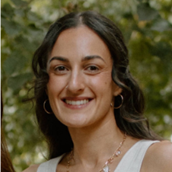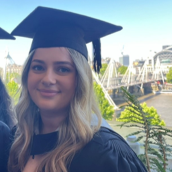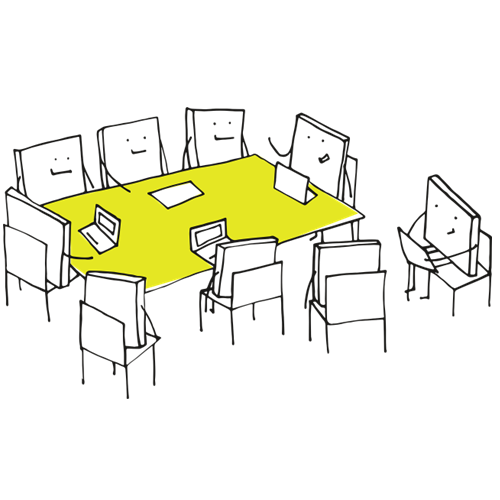This three-part blog post series will cover the full experience of the PhD Upgrade; in this second post, Health and Life Sciences PGRs Hayley Redman, Keira Evans and Amy Chinner discuss what it was like to do their upgrade presentation and viva, and what was involved.
Although we hope that this blog will have some helpful advice and tips for all PGR students coming up to upgrade, some of the upgrade processes within the Health and Life Sciences Faculty may vary from other faculties. We recommend checking upgrade requirements with your own faculty and department.
Meet the contributors:

Hayley Redman (she/her) – Hayley is an SWDTP-funded PhD student on the Health and Wellbeing pathway. Her research is a qualitative study which concerns fathers’ experiences of neonatal palliative care. She started in October 2024, and her upgrade was in July 2025.

Keira Evans (she/her) – Keira is a PhD student within Public Health and Sports Science, funded through the Stepping Out project. Stepping Out aims to determine predictors of falls in older adults. Keira’s research focuses on applying a predictive processing framework and neuropsychology to understanding these predictors. She completed her upgrade in September 2025.

Amy Chinner (she/her) – Amy is a NIHR School for Primary Care Research funded PhD student based within the Exeter Collaboration for Academic Primary Care (APEx) group. Her research focuses on understanding the communication of uncertainty as a component of shared decision making in primary care. She completed her upgrade in September 2025.
Doing the upgrade presentation and viva
What was the upgrade day like?
Hayley: You can choose whether to do an ‘open’ or ‘closed’ presentation. For the open presentation anyone in the university can join. For the closed presentation it is just yourself, your supervisors, and the upgrade panel. I opted for an open presentation as this meant I could invite some peers for support (it is always nice to see a friendly face!). You can also choose whether you would like to have your supervisor present during your viva. If you have decided to have your supervisor present at one point the panel will ask for them to leave so they can ask you if there is anything you would like to talk about without your supervisor there.
What kinds of questions were you asked (after presentation and by examiners)?
Keria: During my viva, I was asked how each of my studies linked together, to make sure that all of them answer my PhD question. This involved going through my studies one by one and talking through the rationale and potential outcome of each of them, and how this related to the aim of my PhD.
Amy: Most of the questions at my viva were quite practical e.g. how to maximise the usefulness of each work package, will the amount of work will be enough/too much for a PhD thesis?, what other areas or considerations could help inform the work? It was really helpful to get input from two experts with different interests and expertise who could look at my PhD project from new angles and find potential avenues to explore further or ways to strengthen my arguments for my final thesis.
Hayley: It is impossible to predict what questions might come up during the viva! However, I would still recommend practicing answering questions. The PHSS conference was a couple of weeks before my upgrade, and I found being asked questions about my poster to really help spark ideas about potential viva questions and was a good way to prepare for the Q&A.
How did you stay calm or manage nerves on the day?
Hayley: Have a printout copy of your upgrade report and any appendices you submitted to hand – this way you will be able to quickly refer to them if asked any specified questions. I also took my notebooks and my reflexivity log in case I needed to refer to them at any time too. Make sure to have eaten beforehand and to have your water bottle on you!
Keira: I tried to look at the upgrade process as a chance to get feedback on my studies and talk through my research ideas with experts outside of my project team. This made the process slightly less daunting as I wanted to talk about my research and get feedback and suggestions to improve where needed.
Amy: I made sure that I had a printed copy of my upgrade report and presentation notes with me just in case I was asked about a specific detail that I couldn’t remember (this didn’t happen!), and so I could make notes on relevant sections in the viva. My supervisor also sat in on my viva – this was my choice, and I found it helpful to know that another person (who had slightly less adrenaline in their system) was there to remember what was discussed and reflect on this afterwards.
What was the most challenging part of the upgrade process for you?
Hayley: I found keeping to the word-limit of the report difficult. After discussing with my supervisor, they helped me to understand the purpose of the report which helped with keeping within the word limit. They suggested the purpose was two-fold: 1) to justify why you are doing the study and 2) to show the study is feasible. The panel want to see that you have strong plans in place so explain exactly how you will do the work (this might change, but preparing for the upgrade is a really good time to start refining the project). Also, if you aren’t already using a reference management software, now is the time! Zotero is free and easy to use. Numeric referencing helped to save on word count.
Amy: The presentation turned out to be the most challenging part for me being more open-ended in terms of structure than the report. Mostly the challenge was around trying to work out how to make the presentation into a coherent (and interesting!) 15-minute story, covering the breadth of my PhD plan as well as demonstrating the detail of what I’ve been working on and thinking about for the past year! It was a definitely a fine balance (and took a few practices and re-writes!), but it made me really consider the value of each point and slide in demonstrating my key ideas and decisions.
Keira: One of the most challenging parts of the upgrade process for me was adapting my presentation style to an academic audience that expected precision and defence of every decision I had made so far. Unlike Patient and Public Involvement (PPI) presentations, where it is important to focus on clarity and encouraging open discussion, the upgrade required me to demonstrate an understanding of the literature, justify methodological choices and anticipate critical questions from experts.
Images by Manfred Steger from Pixabay
The authors acknowledge the use of GenAI (ChatGPT) in the generation of some questions to inform the structure of this blog.

